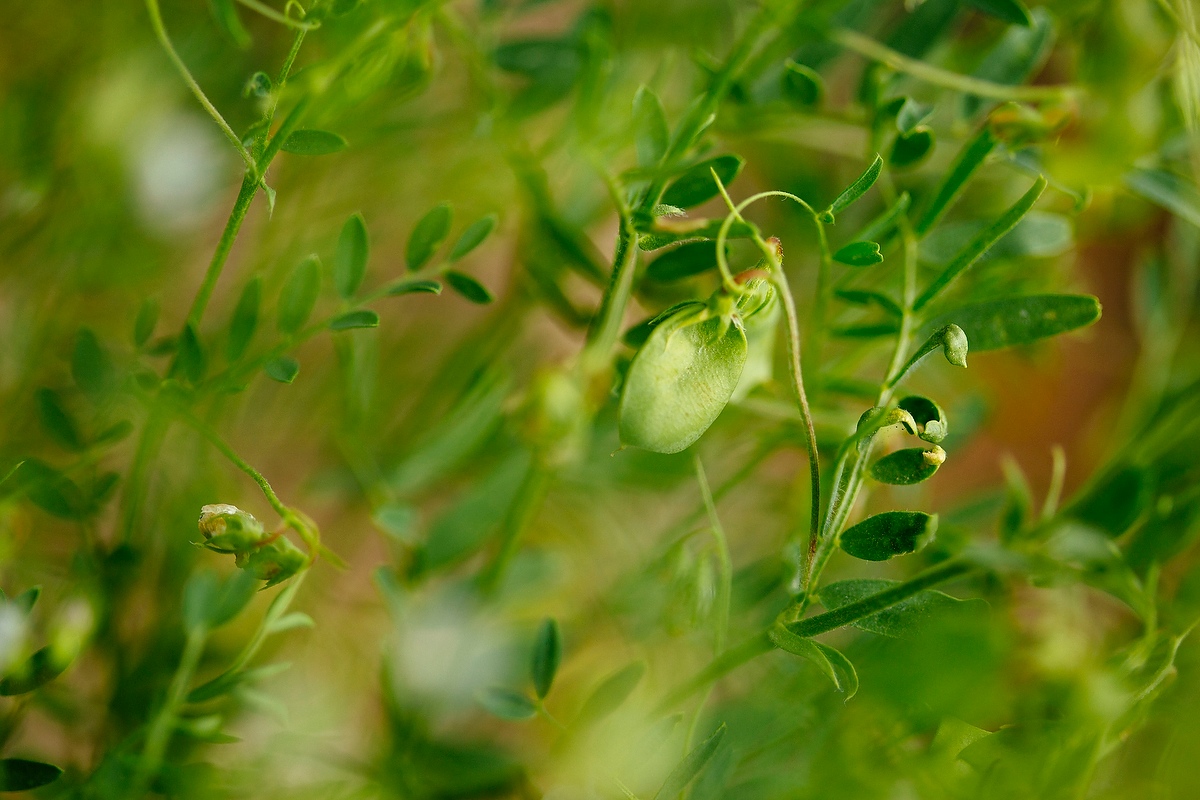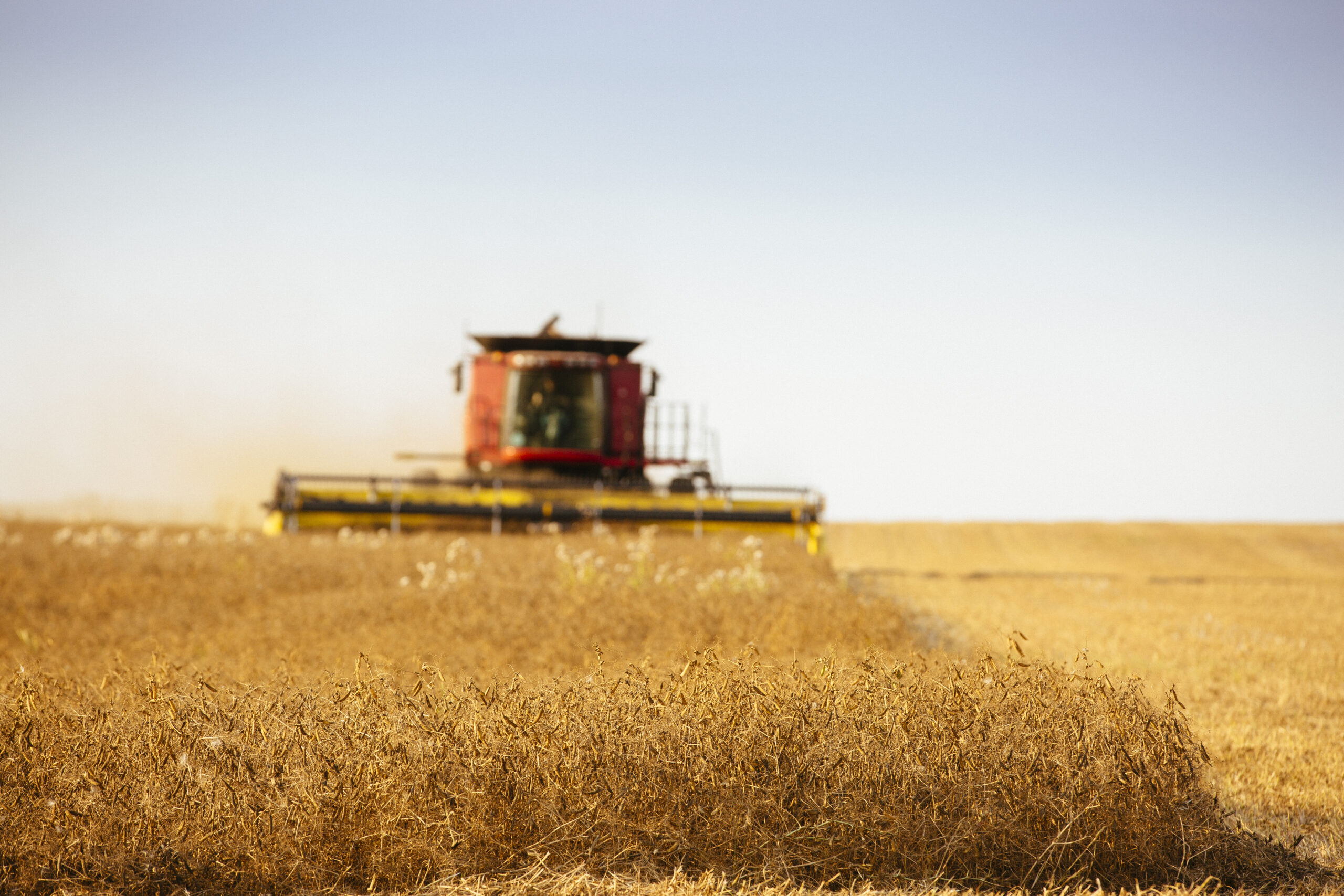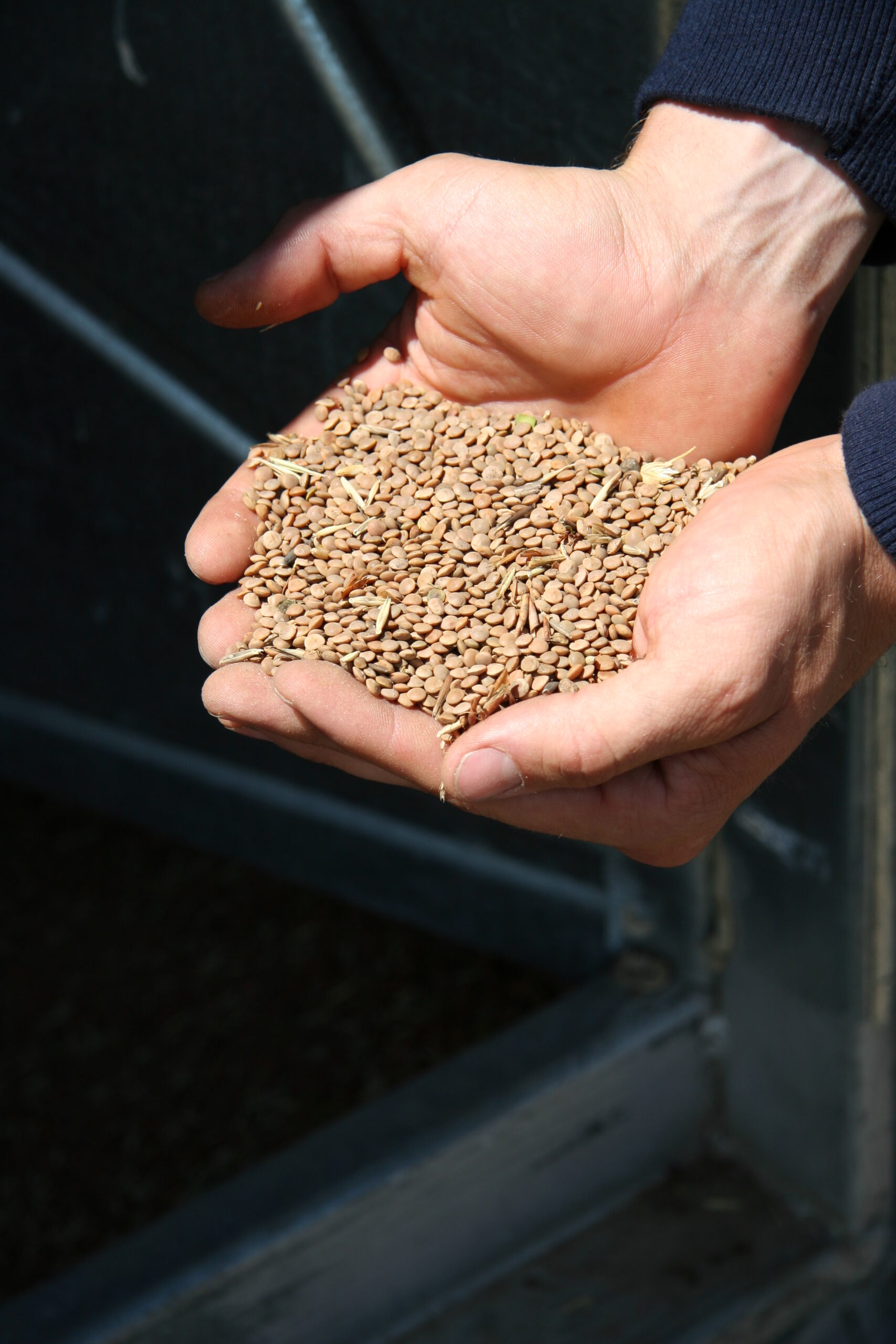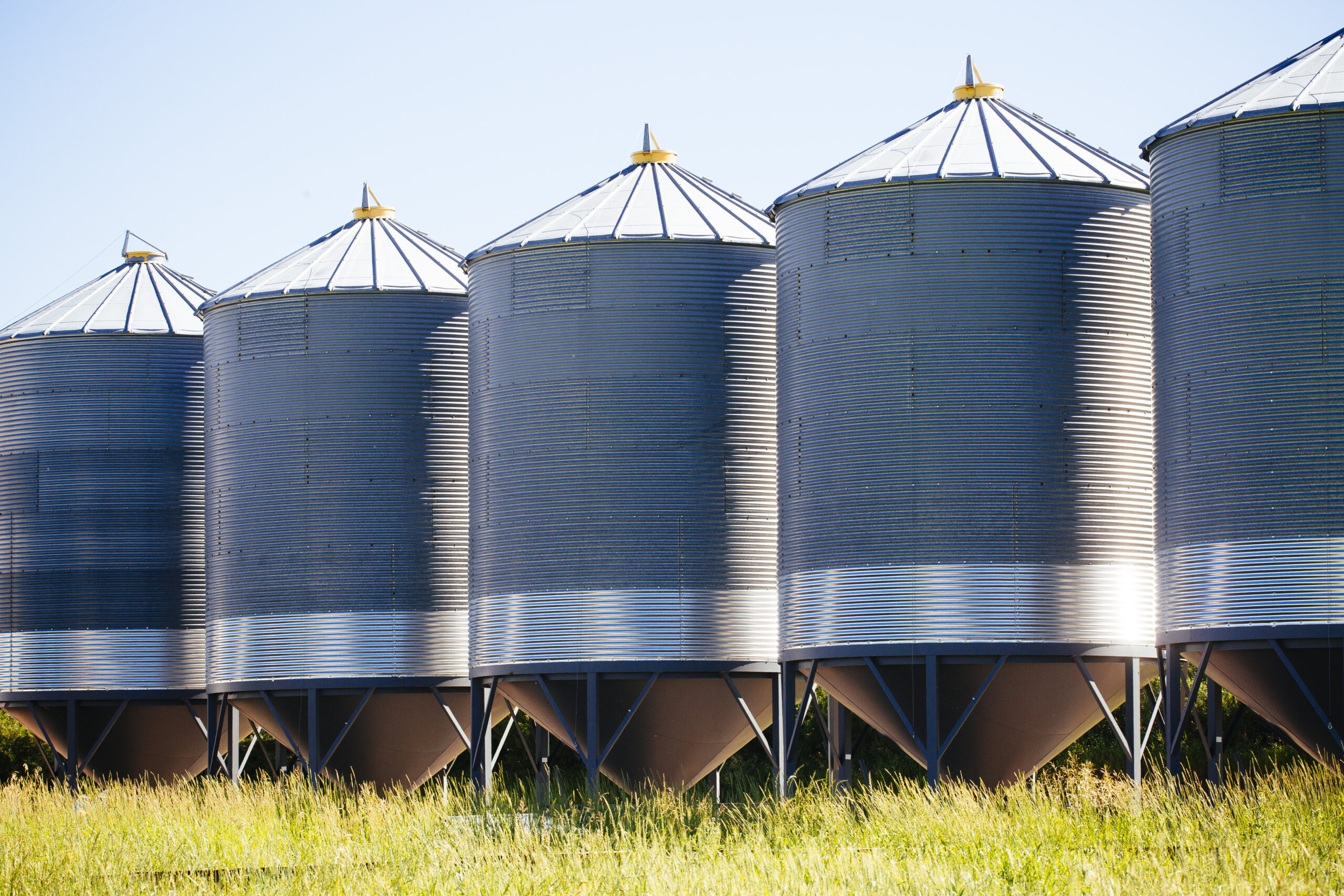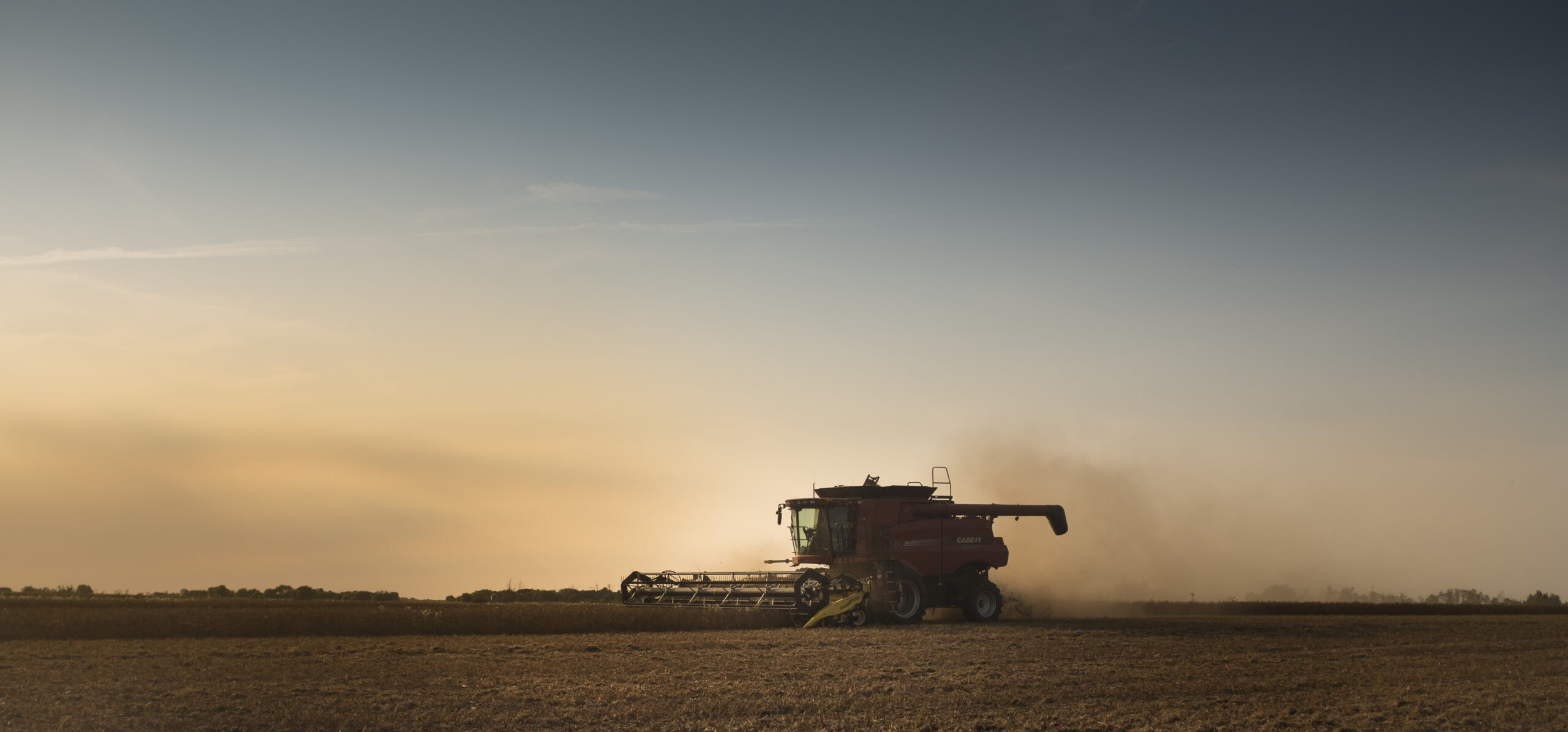Lentils are considered mature when the bottom third of the pods turn yellow to brown and rattle when shaken.
This is the stage recommended for swathing, desiccation, or pre-harvest herbicide application.
Swathing
Swathing will hasten drydown and prevent shattering. Lentils must be cut close to the ground to get the bottom pods with an angle of 20° to 30° suggested for the cutter bar. Swather modifications including pick-up reels and vine lifters are usually needed to do a good job and keep soil from being mixed in with the seeds. To reduce shatter, cut under conditions of high humidity. Swaths can be susceptible to wind movement (especially if cut later than the recommended stage). Under good drying conditions, the quality of the swathed seed is usually better than if chemically desiccated, especially for green varieties. If the swath is subjected to heavy and/or prolonged rain, quality loss can be high due to sprouting, wrinkling and disease build-up compared to a standing crop. Potential losses due to high winds are also a consideration.
Chemicals For Harvest Management & Desiccation
Chemical desiccation to dry down crop foliage and weeds will reduce the time from maturity to threshing readiness, reduce shatter losses, and result in improved quality if the seed is harvested before being exposed to wet weather.
Following the application of desiccants, lentil plants can be ready to thresh in four to seven days if hot, dry, sunny weather follows (although the time period is more commonly seven to 10 days). Application in the evening and into the night, using high water volumes, and using the high end of the recommended rate will result in quicker and more consistent drydown. Days to threshing following application will increase under wet, cool conditions. Reglone® (diquat), and Heat® (saflufenacil) are registered for use as desiccants in lentils.
Glyphosate can be used as a harvest aid but is not a desiccant. It is registered for control of perennial weeds in lentils. It may provide some drydown effect if conditions are warm and dry. Do not apply glyphosate to crops to be used for planting seed, as it may affect germination and seedling development.
Combining
Lentils can be straight combined when seeds and pods are fully mature. Threshing equipment equipped with a flex header, automatic height control, pick-up reel or air reels, and vine lifters is an asset.
Excessively dry seed will chip and peel during threshing. It is preferable to thresh at about 18% moisture and use aeration to dry the sample to 14% for green varieties and 13% for red varieties for safe storage. The red lentil splitting industry prefers product with moisture content below 13% to improve the efficiency in their splitting plant. Check with your red lentil buyer for any seed moisture content requirements.
Combine adjustment guidelines include:
- Low cylinder or rotor speed are required to prevent seed chipping and breaking but fast enough to prevent cylinder plugging (usually somewhere in the range of 250 to 500 revolutions per minute).
- The crop should thresh easily so concave settings can be wide to allow good threshing and separation with minimal seed damage.
- Start with chaffers set at 3/4 inch and cleaning sieves at 3/8 inch and adjust from there. Keep tailings to a minimum. Ensure grain and return elevators are not splitting the seed. Keep fan speed only high enough to produce a clean sample, as lentil seed can be blown out the back of the combine.
Grain Storage
Seed moisture higher than 18% results in longer drying times and as lentil moisture approaches 20%, the crop is difficult to thresh without smashing the seed.
Lentil seed containing green weed seeds and other high-moisture materials should be cleaned as soon as possible to prevent heating. Lentil seed at 14% moisture or less and 15°C or less can be stored safely for up to 40 weeks.
If heated grain drying is needed, air temperatures should not exceed 45°C to preserve germination, and the sample should not be dried more than four to five percentage points per pass through the dryer. Lentil seed can be easily damaged in the drying process, so caution is needed.
Lentil varieties with green seed coats will discolour with age, thus reducing the grade. Producers should store lentils in dry, dark conditions. Seed from successive years should not be mixed, as the oldest seed will cause a downgrading of the entire sample. Green lentils should not be stored through a second summer season to avoid excessive discolouration and downgrading.
Lentil seed is susceptible to increased chipping and peeling if handled in temperatures colder than -20°C. Avoid unnecessary handling and invest in conveying equipment that is gentler on the lentil seed when moving. Belt conveyors cause much less damage than steel flighting augers. Lentils can also be damaged when dropped into a bin from a significant height and it may be necessary to use equipment (i.e. bean ladders) to soften the drop.
